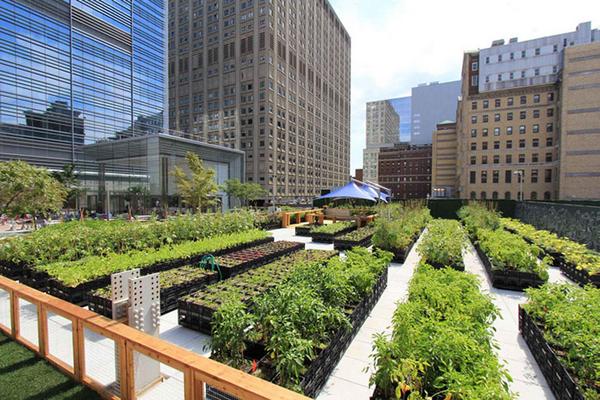What Does City Blooming Do?
What Does City Blooming Do?
Blog Article
City Blooming Fundamentals Explained
Table of ContentsSome Known Incorrect Statements About City Blooming The Basic Principles Of City Blooming 4 Simple Techniques For City Blooming4 Easy Facts About City Blooming DescribedCity Blooming Fundamentals Explained
Intrigued in expanding food for sale in the City of Chicago? Below is a listing of regularly asked questions regarding the regulations and laws that growers must consider when preparing a metropolitan farming task.
The zoning modification does not customize any various other codes dealing with composting, structure permits, buying or leasing City possessed home, business licenses or environmental contamination. There are existing codes that control these issues and they stay completely result and might be applicable to your job. Area gardens are usually possessed or managed by public entities, public companies or community-based organizations and preserved by volunteers.
Urban ranches grow food that is planned to be sold, either on a nonprofit or for-profit basis. Because of their business objective, urban ranches call for a company license. Yes. An area yard is allowed to market excess create that was expanded on site if the sales are accessory or subservient to the garden's main function described above.
Some Of City Blooming
The amount of compost material can not surpass 25 cubic backyards at any type of offered time according to the requirements in 7-28-715 of the City's Municipal Code. Because the soil at a lot of new yard websites requires modifying, garden compost, dirt, timber chips, or other products can be obtained to construct or boost the growing room.

If a building authorization is called for after that the hoophouse will certainly be considered an accessory building. You can figure out even more regarding the building authorization needs by speaking to the Division of Buildings. The 25,000-square-foot size restriction is meant to stop a solitary neighborhood yard from controling an offered block or diminishing the block's existing domestic or business character.
The limit does not apply to gardens located in Public Open Space (POS) districts. Can there be greater than one community yard that is 25,000 square feet on a single block? Yes. The size limit relates to specific yards, not to private blocks. No. Fencing is not needed, however, gardens that have big parking lot might be required to set up secure fencing or other landscape design attributes.
City Blooming - Questions
B1 & B2 districts need that all industrial usage tasks be performed inside your home. R areas limit industrial activity. The regulations mirror the function and intent of the Zoning Code. Is fence needed for city farms? Yes. Fences might be called for, together with landscape design and screening, for certain parking lot and outside work or storage space locations depending on location and the particular activity happening.
Yes. Urban ranches call for structure licenses and zoning approvals prior to building and construction. Various other forms of city testimonial may be required depending on particular frameworks, activities, dimension, landscape design, licensing, public health and stormwater monitoring problems. A lot of these requirements are recognized in the job design or permitting procedure, nevertheless, the candidate might be accountable to independently determine particular licenses or allows that might be required.
Yes. The kind of license is identified by what is happening at the website. The Department of Business Affairs and Customer Defense can help identify the certain sort of service certificate that's called for. Yes. Off street car parking is needed for most industrial tasks in Chicago. The required number of auto parking rooms is based on the variety of employees servicing website and not the moved here square video footage of the expanding area.
Examine This Report on City Blooming

Yes. A city farm can market garden compost product created on site, nonetheless, the operation should abide with the guidelines in 7-28-715 of the Chicago Municipal Code. Yes. Aquaponic systems are allowed indoors on metropolitan ranches in numerous zoning areas. Nevertheless, a zoning testimonial and structure authorization is called for in order to set up frameworks or systems and a service permit is needed as explained above.
Up to five hives or nests of honey bees might be maintained as an accessory usage. Beekeepers have to sign up with the Illinois Department of Agriculture. For even more information about the proposed zoning amendment you might contact the Division of Housing and Economic Advancement, Bureau of Planning and Zoning at 312.744.8563.
Farming in cities and metropolitan areas A city farm in Chicago. Urban agriculture describes various practices of cultivating. https://cityblooming3.wordpress.com/2024/06/27/city-gardening-cultivating-green-spaces-in-urban-jungles/, processing, and distributing food in urban locations. The term also puts on the area activities of pet husbandry, aquaculture, beekeeping, and cultivation in a city context. Urban agriculture is distinguished from peri-urban agriculture, which takes location in backwoods at the side of suburbs.
City Blooming Can Be Fun For Anyone
, who look for to create social networks founded on a common principles of nature and neighborhood holism. These networks can establish by method of formal institutional support, ending up being integrated into neighborhood community planning as a "transition community" activity for lasting metropolitan development.
Some of the very first evidence of city agriculture comes from Mesopotamia.
Report this page